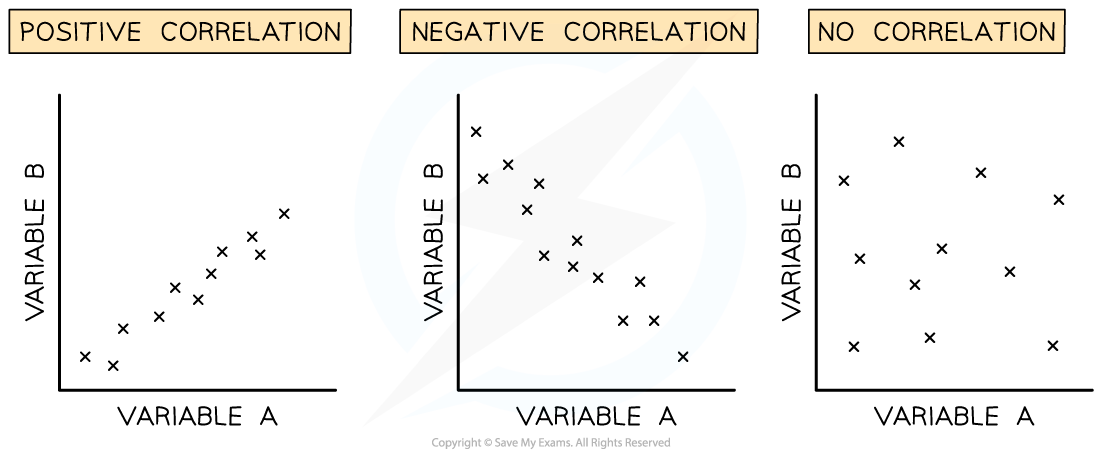Correlations & Causal Relationships - The Lungs (AQA A Level Biology) : Revision Note
Correlations & Causal Relationships - The Lungs
Correlation is an association or relationship between variables
Causation occurs when one variable has an influence or is influenced by another
There is a clear distinction between correlation and causation: a correlation does not necessarily imply a causative relationship
Recognising correlations and causal relationships
Scientists present their findings from experiments in graphical and numerical forms to identify if there are relationships between risk factors and certain disease
Scatter diagrams are used to identify correlations between two variables to determine if a factor (such as obesity) does increase the risk of developing a disease (such as type 2 diabetes)
In this example, BMI would be on the x-axis and Incidence of Type 2 Diabetes on the y-axis
It is important to note that not everyone with a high BMI will develop Type 2 Diabetes, however more people with a high BMI will develop Type 2 Diabetes than those with low BMI
Correlation can be positive or negative
Positive correlation: as variable A increases, variable B increases
Negative correlation: as variable A increases, variable B decreases
If there is no correlation between variables the correlation coefficient will be 0

Image showing different types of correlation in scatter graphs
Risk factors & causal relationships for lung diseases
A causal relationship has been proven for some risk factors relating to lung diseases
It is proven that smoking is a major risk factor for developing lung diseases such as emphysema
The chemicals in cigarettes damage the lungs and airways, making individuals more prone to developing the disease
This has been verified by other scientific investigations that have linked the chemicals to the damage which in turn leads to the disease
Risk factors that are more easily controlled and measured are more likely to have a proven causal relationship, as they can be investigated in a more scientific manner
For example, an individual’s exposure to smoking is much easier to quantify than their exposure to air pollution
When analysing data and studies it is always important to remember that risk factors interact with each other
For example, a smoker with asthma is likely to suffer the associated negative health side effects more quickly than a smoker without asthma
It is always important to remember that even though there is a correlation, this does not mean that there is a direct causal link
For example, in places with higher pollution, there may be more asthmatic individuals but this does not mean that pollution caused asthma as there are many other variables at play
Examiner Tips and Tricks
You should be able to translate information between graphical and numerical forms and extract and interpret information from charts, graphs and tables to determine risk factors.

You've read 0 of your 5 free revision notes this week
Sign up now. It’s free!
Did this page help you?

